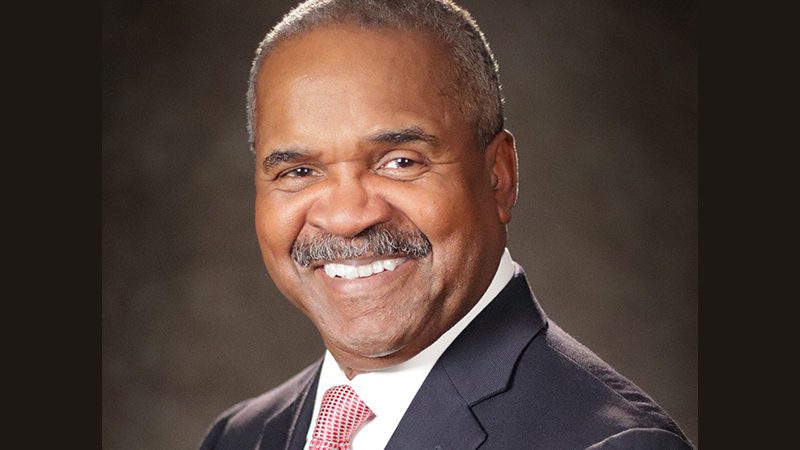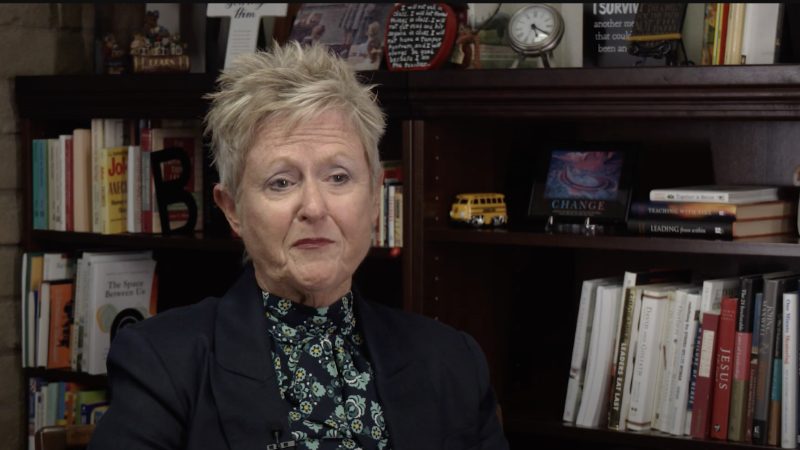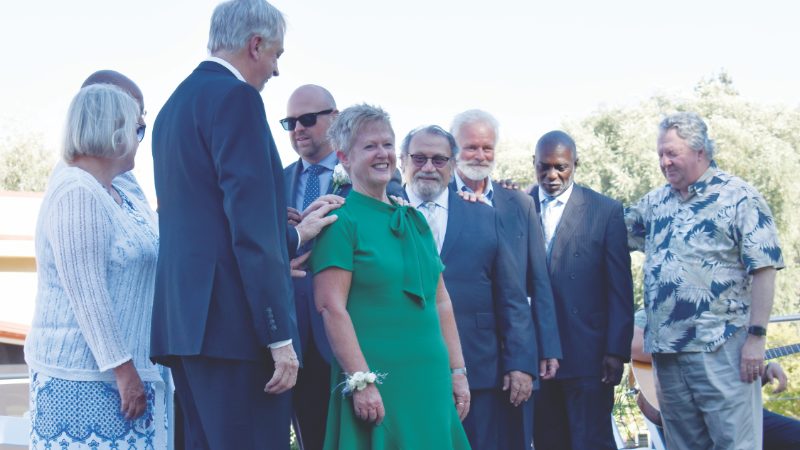By Recorder Editorial Staff
The Pacific Union Recorder first saw the light of day on August 1, 1901. In the many years since then, it has reported on a myriad of church activities, faithful members, and significant events, often of global significance. This short article attempts to capture some of the history and flavor of what has become essential reading for many in the Pacific Union and beyond.
That first issue saw two major articles by Ellen White (“True Missionary Work”) and John Loughborough (“The Church”), followed by an explanation of the formation of the new Pacific Union Conference by its first president, W.T. Knox. He told readers that the development of church work required the establishment of new organizations. “In order to meet the present conditions, and also to relieve the officers of the General Conference, the United States has been organized into six union conferences, of which the Pacific Union is one.” He added, “All questions of general interest in this field, the exchange of laborers, mission work within our own borders, etc., will be questions for the Pacific Union Conference to handle instead of referring them to Battle Creek.”1 This meant the development of a new constitution for the Pacific Union, which interestingly did not even contain any reference to the General Conference!
The editors of the new Recorder explained that “when the organization of the Pacific Union Conference was completed, it was thought it would be a help to the union, as well as to the state, conference work in this district if a paper was published to represent all parts of the work which is being carried on.”2 Consequently, the Recorder replaced the various local conference papers that had been operating up to that time. It was to be produced every two weeks, and the cost was 50 cents a year.


In that first issue, one major development was announced—that of the first Adventist missionaries being sent to Alaska. This was to be a continuing theme for the Recorder—reporting on advances in new areas, and not only in the local region but far overseas. The Recorder for Nov. 20, 1902, carried a report by Alonzo Jones, then president of the California Conference, that missionaries from that conference were being sent to England, Ireland, Italy, Georgia, France, Spain, South Africa, Germany, Canada, and China. He commented, “Nearly all of these are still California workers, to be paid from the California treasury after they reach their foreign fields.”3 Reporting to the General Conference, Jones stated, “The amount of tithe now going to foreign fields from the California Conference is practically half the amount raised in the Conference.”4 This local initiative for mission work reported by the Recorder demonstrated tremendous commitment by the members in the union who knew these workers and kept in regular contact.
After the purchase of Loma Linda in 1906, the Recorder carried a long report of recommendations for the running of the new College of Medical Evangelists, even down to including details of the proposed syllabus!5 Such reporting regarding this flagship institution has continued over the years. For example, in 1910 there was a long article detailing the plans for Loma Linda voted by the fifth session of the Pacific Union Conference.6 In 1937, the Recorder reported the building of the chapel and the library at Loma Linda.7 Plans for a new Dental School were detailed in the Recorder in 1952.8 The College of Medical Evangelists became Loma Linda University in 1961, and the Recorder published the official announcement.9 In January 2011, the Recorder published details of the Proton Treatment Center’s 20th anniversary.10 A global search of the Recorder’s archives reveals 3,210 references to Loma Linda.
Similarly Pacific Union College was frequently featured in the Recorder. For example, B.M. Shull ended his article on the college by asking: “Why should we not as one man take hold and push our educational work, and make Angwin a great college, the Harvard of Seventh-day Adventists?”11
But the Recorder did not carry only church-related news. It also reacted to significant world events such as World War I. In August 1914, the president of the Pacific Union, E.E. Andross, addressed the membership with an article entitled “The Great Crisis Upon Us,” while in the same issue writer Ernest Lloyd contributed a piece called “All Europe Plunges into War.”12



The Great Depression also called for comment, such as, “Then came the great depression and property values and earnings tumbled till many lost not only all their gains, but their former holdings as well. Then many lamented that they had not been more liberal, and that they had not sold and placed their money in the cause.”13 At the heart of the depression, the church produced a brochure promoted by the Recorder entitled “Welfare Work by Seventh-day Adventists” giving practical recommendations for helping the needy.14 The Recorder also noted many of the welfare contributions of the church’s Dorcas Societies during this time.
Anticipating the beginning of World War II, the Recorder published a warning from the Pacific Union committee three days before war was declared.15 The Recorder also published requests that came into the Voice of Prophecy asking for materials related to the war.16
The Recorder has seen many changes in format and presentation. It began as a 16-page broadsheet in Times Roman font with no illustrations. Over the years this has changed, until today it is presented as a monthly full-color magazine of some 60 to 80 pages. But its primary purpose has not changed since 1901: “a paper… published to represent all parts of the work which is being carried on.”
_____________________________
1 W.T. Knox, “Pacific Union Conference of Seventh-day Adventists,” Pacific Union Recorder (Aug. 1, 1901), pp. 3-4.
2 “Pacific Union Recorder,” Pacific Union Recorder (Aug. 1, 1901), p. 16.
3 A.T. Jones, “To the People of the California Seventh-Day Adventist Conference,” Pacific Union Recorder (Nov. 20, 1902), p. 2.
4 “Minority Meeting of General Conference Committee,” p. 121, https://documents.adventistarchives.org/Minutes/GCC/GCC1902.pdf.
5 “The Council of the Medical Department of the Pacific Union Conference,” Pacific Union Recorder (Nov. 14, 1907), pp. 2-4.
6 “College of Medical Evangelists,” Pacific Union Recorder (Feb. 3, 1910), pp. 1-7.
7 “Our Institutions,” Pacific Union Recorder (Feb. 10, 1937), p. 3.
8 M. Webster Prince, “Plans for the New Dental School at Loma Linda,” Pacific Union Recorder (July 21, 1952), pp. 1, 8.
9 “Loma Linda University: School of Graduate Studies,” Pacific Union Recorder (June 5, 1961), p. 1.
10 James Ponder, “Festivities Mark 20th Anniversary of Proton Treatment Center,” Pacific Union Recorder (Jan. 2011), p. 24.
11 B.M. Shull, “A Patron’s View-point,” Pacific Union Recorder (Feb. 17, 1910), p. 7.
12 Pacific Union Recorder (Aug. 6, 1914), pp. 1-2.
13 G.A. Roberts, “At the Island of Speculation,” Pacific Union Recorder (Nov. 20, 1924), p. 2.
14 “Welfare Work,” Pacific Union Recorder (July 21, 1932), p. 2.
15 “An Appeal from the Pacific Union Conference Committee,” Pacific Union Recorder (Sept. 6, 1939), p. 1.
16 “Voice of Prophecy,” Pacific Union Recorder (Sept. 27, 1939), p. 3.
El Pacific Union Recorder: algunos hitos históricos
Por el personal del Recorder
El Pacific Union Recorder vio la luz por primera vez el 1 de agosto de 1901. En los muchos años transcurridos desde entonces, ha informado sobre una miríada de actividades de la iglesia, sus fieles miembros y eventos significativos, a menudo de importancia mundial. Este breve artículo intenta capturar algo de la historia y el sabor de lo que se ha convertido en una lectura esencial para muchos en la Pacific Union y más allá.
Ese primer número vio dos artículos importantes de Ellen White («La verdadera obra misionera») y John Loughborough («La Iglesia»), seguidos de una explicación de la formación de la nueva Pacific Union Conference por su primer presidente, W. T. Knox. Informó a los lectores que el desarrollo de la obra de la iglesia requería el establecimiento de nuevas organizaciones. «Con el fin de cumplir con las condiciones actuales, y también para relevar a los oficiales de la Conferencia General, los Estados Unidos se han organizado en seis Union Conferences, de las cuales la Pacific Union es una». Agregó: «Todas las cuestiones de interés general en este campo, el intercambio de obreros, la obra misionera dentro de nuestras propias fronteras, etcétera, serán cuestiones que la Pacific Union Conference deberá manejar en lugar de referirlas a Battle Creek».1 Eso significó el desarrollo de una nueva constitución para la Pacific Union, que curiosamente ni siquiera contenía ninguna referencia a la Conferencia General.
Los editores del nuevo Recorder explicaron que «cuando se completó la organización de la Pacific Union Conference, se pensó que sería de ayuda para la Unión, así como para el trabajo de la conferencia estatal en este distrito, si se publicaba un documento que representara todas las partes del trabajo que se está llevando a cabo».2 En consecuencia, el Recorder reemplazó a los diversos documentos de conferencias locales que habían estado funcionando hasta ese momento. Se produciría cada dos semanas y el costo era de 50 centavos al año.


En ese primer número, se anunció un acontecimiento importante: el envío de los primeros misioneros adventistas a Alaska. Ese iba a ser un tema continuo para el Recorder —informando sobre los avances en nuevas áreas, y no solo en la región local, sino en el extranjero—. El Recorder para el 20 de noviembre de 1902, publicó un informe de Alonzo Jones, entonces presidente de la California Conference, de que se estaban enviando misioneros de esa conferencia a Inglaterra, Irlanda, Italia, Georgia [en Europa oriental], Francia, España, Sudáfrica, Alemania, Canadá y China. Comentó: «Casi todos estos siguen siendo trabajadores de California, a los que se les pagará de la tesorería de California después de que lleguen a sus campos en el extranjero».3 Al informar a la Conferencia General, Jones declaró: «La cantidad de diezmos que ahora van a los campos extranjeros de la California Conference es prácticamente la mitad de la cantidad recaudada en la Conferencia».4 Esa iniciativa local para el trabajo misionero reportada por el Recorder demostró un tremendo compromiso por parte de los miembros de la Unión que conocían a esos trabajadores y se mantenían en contacto regular.
Después de la compra de Loma Linda en 1906, el Recorder presentó un extenso informe de recomendaciones para el funcionamiento del nuevo Colegio de Médicos Evangelistas, ¡incluso hasta incluir detalles del plan de estudios propuesto!5 Ese tipo de informes sobre esta institución emblemática ha continuado a lo largo de los años. Por ejemplo, en 1910 hubo un largo artículo que detallaba los planes para Loma Linda votado por la quinta sesión de la Pacific Union Conference.6 En 1937, el Recorder informó sobre la construcción de la capilla y la biblioteca en Loma Linda.7 Los planes para una nueva Facultad de Odontología se detallaron en el Recorder en 1952.8 El Colegio de Médicos Evangelistas se convirtió en Loma Linda University en 1961, y el Recorder publicó el anuncio oficial.9 En enero de 2011, el Recorder publicó detalles del 20º aniversario del Proton Treatment Center.10 Una búsqueda global de los archivos del Recorder revelan 3.210 referencias a Loma Linda.
Del mismo modo, Pacific Union College aparecía con frecuencia en el Recorder. Por ejemplo, B. M. Shull terminó su artículo sobre el college preguntando: «¿Por qué no deberíamos nosotros, como un solo hombre, afianzar e impulsar nuestra obra educativa, y hacer de Angwin un gran college, el Harvard de los Adventistas del Séptimo Día?»11
Pero el Recorder no solo traía noticias relacionadas con la Iglesia. También reaccionó a acontecimientos mundiales importantes, como la Primera Guerra Mundial. En agosto de 1914, el presidente de la Pacific Union Conference, E. E. Andross, se dirigió a los miembros con un artículo titulado «La gran crisis sobre nosotros», mientras que en el mismo número el escritor Ernest Lloyd contribuyó con un artículo titulado «Toda Europa se sumerge en la guerra».12



La Gran Depresión también requirió comentarios, tales como: «Después vino la Gran Depresión y los valores de las propiedades y las ganancias se desplomaron a tal grado que muchos perdieron no solo todas sus ganancias, sino también sus antiguas posesiones. Entonces muchos se lamentaron de no haber sido más liberales, y de no haber vendido y puesto su dinero en la causa».13 En el corazón de la depresión, la iglesia produjo un folleto promovido por el Recorder titulado «La obra de bienestar de los adventistas del séptimo día», dando recomendaciones prácticas para ayudar a los necesitados.14 El Recorder también señaló muchas de las contribuciones de bienestar de las Sociedades Dorcas de la iglesia durante este tiempo.
Anticipando el comienzo de la Segunda Guerra Mundial, el Recorder publicó una advertencia del comité de la Unión del Pacífico tres días antes de que se declarara la guerra.15 El Recorder también publicó solicitudes que llegaron a La Voz de la Profecía pidiendo materiales relacionados con la guerra.16
El Recorder ha visto muchos cambios en el formato y la presentación. Comenzó como un pliego de 16 páginas en letra Times Roman sin ilustraciones. Con el paso de los años esto ha ido cambiando, hasta que hoy se presenta como una revista mensual a todo color de unas 60 a 80 páginas. Pero su propósito principal no ha cambiado desde 1901: «una revista... publicada para representar todas las partes de la obra que se está llevando a cabo».
_____________________________
1 W.T. Knox, «Pacific Union Conference of Seventh-day Adventists,» Pacific Union Recorder (Aug. 1, 1901), pp. 3-4.
2 «Pacific Union Recorder,» Pacific Union Recorder (Aug. 1, 1901), p. 16.
3 A.T. Jones, «To the People of the California Seventh-Day Adventist Conference,» Pacific Union Recorder (Nov. 20, 1902), p. 2.
4 «Minority Meeting of General Conference Committee,» p. 121,
https://documents.adventistarchives.org/Minutes/GCC/GCC1902.pdf.
5 «The Council of the Medical Department of the Pacific Union Conference,» Pacific Union Recorder (Nov. 14, 1907), pp. 2-4.
6 «College of Medical Evangelists,» Pacific Union Recorder (Feb. 3, 1910), pp. 1-7.
7 «Our Institutions,» Pacific Union Recorder (Feb. 10, 1937), p. 3.
8 M. Webster Prince, «Plans for the New Dental School at Loma Linda,» Pacific Union Recorder (July 21, 1952), pp. 1, 8.
9 «Loma Linda University: School of Graduate Studies,» Pacific Union Recorder (June 5, 1961), p. 1.
10 James Ponder, «Festivities Mark 20th Anniversary of Proton Treatment Center,» Pacific Union Recorder (Jan. 2011), p. 24.
11 B.M. Shull, «A Patron’s View-point,» Pacific Union Recorder (Feb. 17, 1910), p. 7.
12 Pacific Union Recorder (Aug. 6, 1914), pp. 1-2.
13 G.A. Roberts, «At the Island of Speculation,» Pacific Union Recorder (Nov. 20, 1924), p. 2.
14 «Welfare Work,» Pacific Union Recorder (July 21, 1932), p. 2.
15 «An Appeal from the Pacific Union Conference Committee,» Pacific Union Recorder (Sept. 6, 1939), p. 1.
16 «Voice of Prophecy,» Pacific Union Recorder (Sept. 27, 1939), p. 3.






